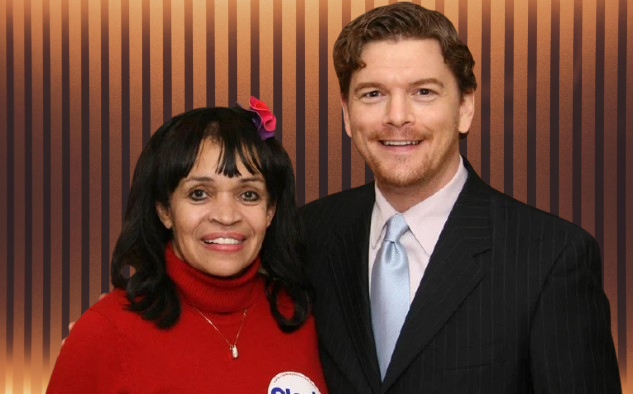Unusual Award n.13: Extreme Gluteal Proportions In African Woman
Awards are traditionally reserved for achievements in academics, arts, sports, and other domains of excellence. However, as societal appreciation for diverse forms of beauty and uniqueness grows, there’s a shift towards recognizing unconventional traits. One such unique accolade is “Unusual Award n.13: Extreme Gluteal Proportions In African Woman,” which celebrates extreme gluteal proportions in African women. This recognition highlights the role of genetics, cultural identity, and social perspectives in shaping perceptions of beauty.
Historical Context of Body Positivity in African Culture
In African societies, curvaceous figures have historically been celebrated as symbols of fertility, health, and prosperity. Artistic depictions from ancient civilizations, such as the Venus of Willendorf, reflect the enduring admiration for fuller figures. In many African cultures, larger gluteal proportions are viewed as an embodiment of feminine beauty and strength.
This cultural appreciation has permeated modern times, influencing music, fashion, and art. The Unusual Award No. 13 can be seen as an extension of this cultural admiration, aiming to spotlight women who naturally embody these celebrated traits.
The Science Behind Gluteal Proportions
Extreme gluteal proportions often stem from a combination of genetics, lifestyle, and environmental factors. One notable genetic condition linked to pronounced gluteal features is steatopygia, commonly found among certain ethnic groups in Southern Africa, including the Khoisan and Pygmies. This condition is characterized by an accumulation of adipose tissue in the buttocks, which has been historically associated with survival advantages in harsh environments.
Modern research shows that gluteal proportions can also be influenced by diet, hormonal balance, and physical activity. While genetics play a crucial role, cultural practices such as specific dance forms and traditional postures might further accentuate these features.
The Globalization of African Beauty Standards
Over the past few decades, African beauty standards have gained global recognition. The rise of social media and the entertainment industry has amplified the visibility of African women with extreme gluteal proportions. Celebrities and influencers often celebrate their natural curves, challenging Eurocentric ideals of slenderness and promoting body positivity.
This global appreciation has also sparked conversations about the ethical implications of surgically enhancing one’s body to emulate African aesthetics. The Unusual Award No. 13 serves as a reminder of the importance of authenticity and embracing natural beauty.
Cultural Implications of Extreme Gluteal Proportions
For African women with pronounced gluteal proportions, this physical trait is more than a feature—it is a cultural identity marker. In traditional ceremonies and celebrations, their physiques are often adorned and showcased as symbols of pride.
In regions like West Africa, dance forms such as Mapouka and Azonto incorporate movements that emphasize the hips and buttocks, celebrating the natural rhythm and grace of the body. The Unusual Award No. 13 amplifies this celebration, giving it a platform beyond cultural boundaries.
Challenges and Misconceptions
While extreme gluteal proportions are celebrated in many contexts, they can also lead to challenges. Misconceptions and stereotypes often arise, reducing a person’s identity to their physical attributes. This objectification can affect self-esteem and social interactions, especially in regions where such features are less understood or appreciated.
Additionally, women with pronounced gluteal proportions might face practical challenges, including finding clothing that fits comfortably or managing health issues such as lower back strain. The award serves not only to celebrate but also to raise awareness about these challenges, advocating for inclusivity in fashion and healthcare.
The Role of Media in Shaping Perceptions
The media plays a significant role in shaping public perceptions of body image. Documentaries, social media posts, and photo campaigns featuring African women with extreme gluteal proportions have sparked global conversations about beauty diversity. Platforms like Instagram and TikTok allow these women to share their stories, breaking stereotypes and fostering a sense of community.
However, the media’s portrayal is not without flaws. The tendency to sensationalize or fetishize such traits can detract from the individuality and humanity of the women being celebrated. The Unusual Award No. 13 emphasizes respectful representation, ensuring that honorees are recognized for their uniqueness and cultural significance.
Health and Fitness: Balancing Beauty and Well-Being
While celebrating extreme gluteal proportions, it’s essential to address health and fitness. Maintaining a balanced lifestyle is crucial for overall well-being, regardless of body type. For women with pronounced curves, targeted exercises like squats, lunges, and yoga can help strengthen the lower back and improve posture, mitigating potential discomfort associated with their physique.
Nutrition also plays a vital role in supporting a healthy lifestyle. Diets rich in protein, fiber, and essential fats can help maintain energy levels and overall health, allowing these women to embrace their bodies with confidence.
The Award Ceremony: A Celebration of Diversity
The Unusual Award No. 13 isn’t just about recognizing physical attributes—it’s a celebration of individuality and cultural pride. The award ceremony often features traditional African music, dance, and fashion, creating an immersive experience that honors the heritage of the honorees.
Each recipient shares their journey, highlighting the intersection of genetics, culture, and personal resilience. This platform not only empowers the honorees but also inspires others to embrace their unique traits.
The Influence of African Diaspora Communities
African diaspora communities have played a pivotal role in promoting the appreciation of extreme gluteal proportions. In regions like the Caribbean, South America, and the United States, African-descended populations have integrated this aesthetic into their own cultural expressions. Music genres such as reggae, dancehall, and hip-hop often celebrate curvaceous figures, further popularizing African beauty ideals.
This cross-cultural exchange reinforces the importance of recognizing and valuing diverse forms of beauty, as exemplified by the Unusual Award No. 13.
Addressing the Critics: Why This Award Matters
Critics might question the relevance of such an award, arguing that it focuses too narrowly on physical appearance. However, the Unusual Award No. 13 goes beyond superficial recognition. It challenges societal norms, encourages self-acceptance, and promotes the inclusion of underrepresented body types in mainstream discourse.
By celebrating extreme gluteal proportions, the award sends a powerful message: beauty is multifaceted, and every individual deserves to be celebrated for their uniqueness.
Conclusion: A Step Towards Inclusivity
The Unusual Award No. 13 shines a spotlight on a trait that has long been admired in African cultures but often misunderstood elsewhere. By recognizing extreme gluteal proportions, the award celebrates individuality, challenges stereotypes, and fosters a deeper appreciation for diversity.
In a world increasingly focused on inclusivity and representation, this award serves as a reminder that beauty comes in all shapes and sizes. It empowers women to embrace their natural features and inspires society to broaden its understanding of what it means to be beautiful. Through this celebration, the Unusual Award No. 13 contributes to a more accepting and diverse world.










